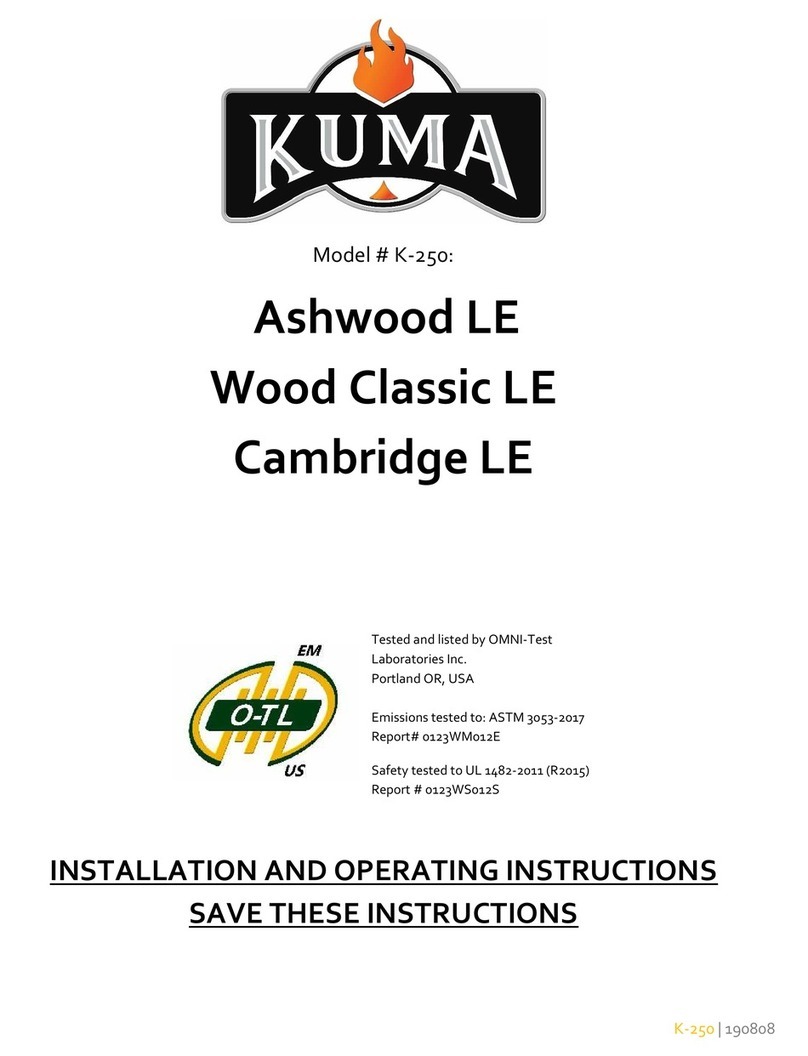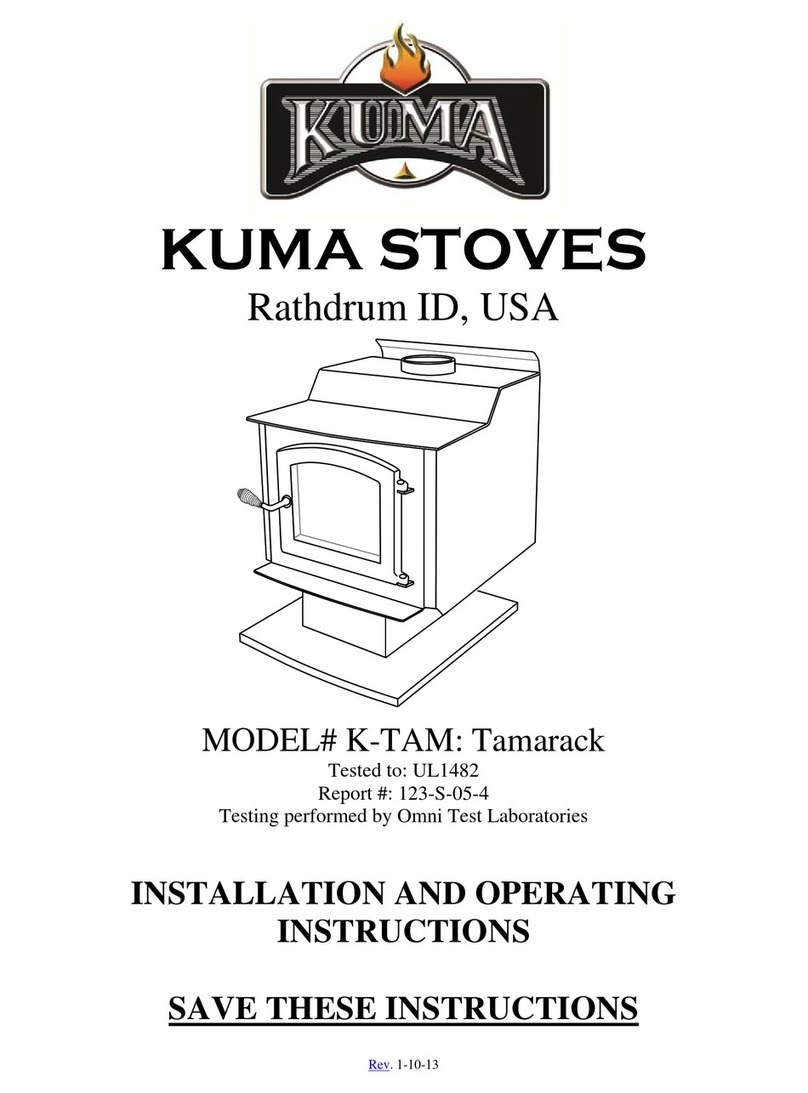
10
the chimney that can slide in to chimney and severely damage it. Please consider snow breaks or
snow dividers to prevent damage.
2. Once you’ve determined the stove location based on the applicable clearances and connector type
(see section 6), be sure to check attic and roof for any obstructions. Install the chimney system
according to the step by step illustrated instructions that came with your chimney.
3. Special care needs to be exercised when passing the chimney through an attic space. An attic
insulation shield must be used in all chimney installations to ensure that no insulation can contact
the chimney pipe. If there is little or no attic space, or if you have a vaulted ceiling, use a tall
square cathedral ceiling support box to pass all the way through to the roof line to provide the
shielding.
4. Stability: If necessary, install a roof brace kit on the chimney to stabilize the chimney against
wind, etc. Generally, roof bracing is required if the chimney extends more than five feet above the
chimney exit point.
5. See illustrations in section 6, page 22, for all components required for factory-built chimneys, as
well as parts required to connect to an approved masonry chimney.
6. Chimney Height. Page 22 shows the minimum chimney height in relation to the roof. With low
pitch roofs or little attic space, the chimney can be too short. For proper draft and best
performance, a minimum overall height of connector pipe plus chimney combined should be at
least 12 feet tall, measured from the stove top to the chimney cap. If necessary, add chimney.
STEP 3: Installing the hearth
1. The hearth must be a minimum 3/8” thick non-combustible material and must extend beyond the
base of the stove 8” to the sides and back and 18” to the front (section 6). This will require a
hearth that is at least 46” wide and 54” deep. In Canada the hearth must be at least 54” deep. For
Canadian clearances refer to the listing tag on the back of the stove.
STEP 4: Setting the stove and connecting to the chimney
1. Attach the legs before setting the stove on the hearth. Once the legs are attached, set it gently on
the hearth using cardboard to protect the hearth.
2. Position the stove on the hearth according to the clearances shown on the diagrams in section 6.
Be sure that the stove is at least minimum clearance from all combustible walls and materials. If
possible it is advisable to set the stove 1-2 inches further away from the combustibles than
required.
3. Using double wall or single wall stove pipe, connect the stove to the chimney. We recommend
using double wall pipe regardless of pipe clearance; however, single wall pipe is approved for use.
If necessary, use elbows to offset the pipe so that the stove can remain at the correct clearance and
still connect to the chimney. Secure each pipe joint with three screws, using the screws provided
with the pipe. Be sure to follow the clearance diagrams in section 6 pertaining to the correct pipe,
single or double wall. Single wall pipe has a minimum clearance of 18” and double wall a
minimum clearance of 8”
If your stove installation required a permit and requires inspection by the local building dept. please do not
forget to call for inspection. It is important that your permit and inspection be finalized, as some insurance
companies will require the stove to be inspected. It is also a great idea to give your insurance a call and let
them know that you have installed a wood stove.
Outside Air -
1. Kuma stoves does not particularly require that outside air be directly connected to this
stove, However, some state or local building codes may mandate outside air. If your state or
local building code requires an outside air supply use part# KA-OUTSIDEAIR. If you are unable
to supply a direct connection to the stove or if you need additional ventilation due to room air
starvation, we suggest the following:




































